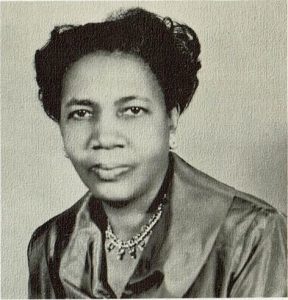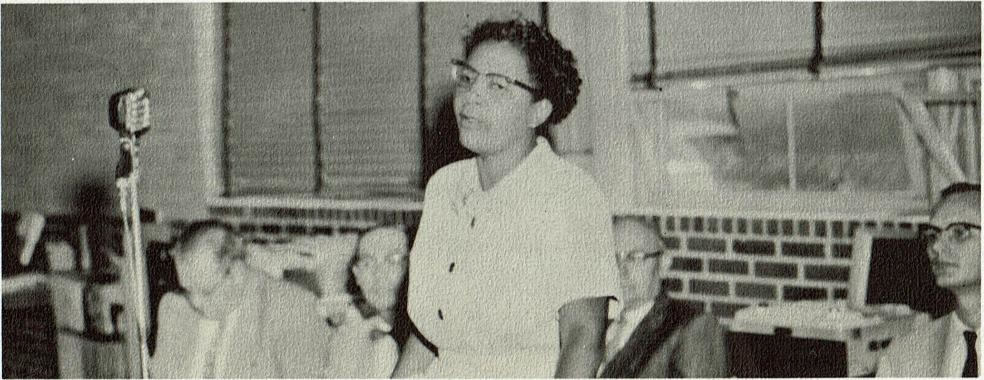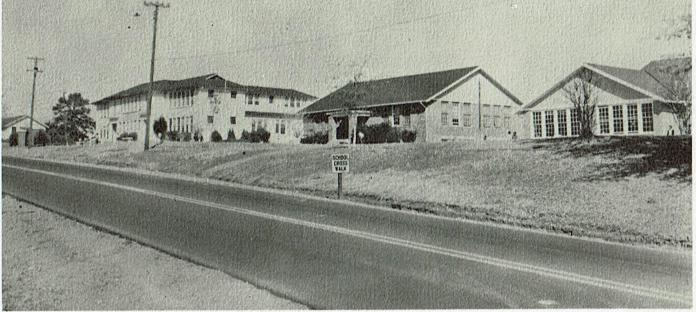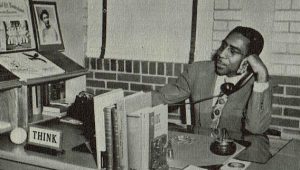About Our History

GRACE N. LANDRY Jeanes Supervisor
INTRODUCTION: The program of in-service education for personnel serving in schools for Negro boys and girls in Webster Parish has consisted of a variety of activities and has extended over a period of years. This report begins with the year 1937 and continues to the present.
The program in all its aspects has been concerned with providing classroom teachers with the opportunity to work together on mutual problems, promoting a spirit of understanding and friendliness, and improving the quality of teaching through the evaluation of new trends and techniques.
Listed below are the activities engaged in by teachers with brief descriptions of major ones:
I. MEETINGS. Meetings have taken many forms, yet have played a con-spicuous part in helping teachers to grow in service.
A. Zone meetings – In the early stages of the program teachers were divided into groups according to geographical location. These groups met for one-half day on a regular school day once each month and attempted to meet the professional as well as social needs of teachers in the small rural schools. These meetings afforded a rich opportunity for teachers, patrons, supervisor and other school personnel to discuss problems common to a particular school area and paved the way for future programs. Emphasis was placed upon better methods of teach¬ing and learning in the various subject areas. Demonstration classes were taught and opportunities were provided for discussion of procedures in light of individual classroom situations.
B. Workshops – As the program of the school broadened in scope and teachers realized the need for better understanding of ways for work¬ing with children as well as the necessity for working together on problems of curriculum improvement the workshop idea was introduced as a means of meeting these needs and for encouraging teacher growth. Three health education workshops were held under the sponsorship of the Webster Parish School Board, the local teachers association and the State Department of Education. Through the years many other workshops have been conducted, thus providing teachers with a variety of rich and stimulating experiences for improving the educational programs for the boys and girls under their direction. All workshops were planned around themes which were broad in scope, yet detailed enough to meet the needs and interests of the participants.
2. IN-SERVICE ED, At all times careful attention is given organization of workshop activities far in advance of the meeting date, which has proved very effective. Wide use is made of resources of State Colleges, the State Department of Education, local administrative officers and staff. Work¬shop themes have centered around such topics as – child growth and development, educational evaluation, basic curriculum areas and guid¬ance.
C. In addition to special workshops, for the past few years, pre-school conferences have furnished the stimulus for in-service programs. For several years the entire parish has been organized for professional study. Democratic methods are used in planning, executing and evalu – ating the conferences. Participation is good and teachers are almost unanimous in their opinions that the in-service program is helpful and should be continued.
Other activities which contribute to the in-service growth of teachers are:
1. Classroom visitation by supervisor (on call and schedule)
2. Testing programs
3. Locating and assisting with use of many kinds of materials for en-riching the curriculum such as, books, periodicals, films, filmstrips, etc.
4. Newsletters, bulletins, curriculum guides, and progress reports.
5. Educational exhibits
6. Experimentation by one school within a subject field (Cullen Elemen¬tary school served as pilot school for project in improving reading)
7. Inter -school contacts and conferences. (Teachers observe other teach¬ers working on similar problems.)
8. Demonstration schools (one time used to foster teacher growth)
9. Spring and fall planning
10. Cooperative planning and participation
11. Contacts with State, regional and National programs
12. Special study at summer school or special leave.
13. Professional reading
14. Orientation programs for new and beginning teachers
15. Educational forums once each year at which time outstanding educa¬tional leaders are invited to discuss broad issues in the field of curricu – Ium development.
16. Vesper and Tea. This year for the first time a vesper service and tea set the stage for the three-day professional conference, an innovation which proved highly successful both from an educational, spiritual and recreational standpoint.

Webster Parish Education Association In Action

J. L. JONES ELEMENTARY SCHOOL
On September 4, 1954, the history of J. L. Jones Elementary Schoolbegan, with Mr. Eddie L. Heard as its first principal. The school was named in honor of the late Principal J. L. Jones, by citizens, patrons, and alumni of Webster Parish.
For thirty-one years this school was a part of Webster High School, with its wonderful heritage, colorful history, high standards, outstanding achievement, and recognition. All personnel of J. L. Jones School have worked untiringly to keep those standards high.
The Philosophy of J. L. Jones Elementary School is to strive to provide wholesome experiences for boys and girls that will develop them into happy, useful citizens in the community, state and nation.
Keeping in mind the standards mentioned and the philosophy, it is necessary that the pupils of J. L. Jones School share in various activities that will help to develop them into useful citizens. Some of the activities being sponsored are: (1) The Girl Scouts, (2) Boy Scouts, (3) The Brownies, (4) Cub Scouts, (5) Choir, (6) 4-H Club, (7) Newspaper, (8) Band, etc. The P. T. A. has shared in sponsoring some of these activities.
Teacher Qualifications: Each teacher of J. L. Jones has a Bachelor Degree, and four have Master’s Degrees.
Teacher Retirement: There have been two teachers of J. L. Jones School to retire. At the close of the session 1954-55, Mrs. Mable Leary, a sixth grade teacher, retired. At the close of the session 1956 -57, Mrs. Alice Hughley, a fourth grade teacher, retired. Both members of the personnel had worked faithfully developing and molding the lives of the youth of the school. They are still missed by the faculty and student body.
The student body of J. L. Jones School is composed of 844 pupils, and the administrative personnel comprises 30 teachers, 1 clerk, 2 custodians, 7 cafeteria workers and 1 canteen worker.
The school has moved forward under the leadership of the teachers and principal.
JONES ELEMENTARY SCHOOL-SPECIAL EDUCATION DEPARTMENT
Very rarely is the true history told about institutions, movements, etc., but what follows represents the true early and current history of the Exceptional Class at J. L. Jones Elementary School, Minden, Louisiana.
The idea of an exceptional class – to do something for the Negro children was a by-product of a sincere desire to help these children who because of im¬paired physical, mental or other conditions, could not profit fully from regular day school. Three persons discussed this idea one day. They were the late Mrs. Cleo Newhouse , Mrs. Marguerite A. Hayes, and Principal W. Leon Hayes. The date: spring 1951. It was agreed that a survey be made of the whole parish to determine the children with needs for such teachings, with the idea of making the Webster Elementary School a center where these children of the parish would be brought in.
This idea was discussed with Miss Sue Hefley, the Supervisor of Materials of Webster Parish, who thought it a good idea and who gave her unselfish service to seeing this dream become a reality. Mr. R. 0. Machen, Assistant Super¬intendent of Webster Parish Schools aided in this stage of planning and gave assistance, advice and counsel. Mrs. Clovis Watson, Visiting Teacher of Webster Parish, also helped to recruit the first members of the class.
The principal presented the facts about the number of children needing the class, cost, the need for a new teacher, etc. to Mr. J. E. Pitcher, Superinten¬dent of Webster Parish Schools, who along with the Webster Parish School Board, gave permission to officially start the program September 1, 1952.
The original program was of dual nature: (1) to serve the exceptional child¬ren and (2) to give special instructions to slow learners.
Mrs. Cleo Newhouse was selected as teacher of this class because of her interest in all children, her ability to teach, and because she had proved her-self capable of handling this class by doing so well with students as a substitute teacher. Using the dining room of the Webster High School Dormitory with make shift furniture, equipment, and using her personal car to pick some of the students up (without reimbursement) the class was started.
Mrs. Newhouse developed a program that claimed the attention of educators as far off as Louisiana Tech and Grambling College. Seeing the good work and the needs of this class Mrs. E. B. Hands. Jr. and the Junior Service League of Minden donated equipment.
In planning the new four room addition, the exceptional children were not forgotten by the school board and Mrs. Sue Hefley, for they were included in this four room structure, having a nice room with modern equipment. It was a dream come true to see these little happy children along with their teachers moving into this building. These children too are God’s creations and deserve a good education also.
At one time the enrollment to the class was as high as 19 persons, includ-ing all types of handicaps, age groups – mentally retarded, spastic, the emotionally disturbed child and the slow learner. It was later found that the class was too large and too heterogeneous and that local needs made it possible to limit the class to the more extreme mental and physical handicapped and the slow learner.
The enrollment was limited to the maximum for such classes – not more than 10 children.
Seeing a need for more training in this her chosen field, Mrs. Newhouse secured a leave of absence that she might study during the session 1955-56. Mrs. N. B. Morgan was chosen to take her place during the leave.
The class is now composed of 9 persons ranging in ages from 6 through 14 years – mentally retarded, slow learner, 2 brain damage – 8 boys and 1 girl. Throughout the existence of the class boys have been more prevalent than girls. A ratio of 9 to 1.
The class is supported by the school board with special services and aids coming from Junior Service League, Association for Mentally Retarded Child¬ren, Easter Seals Division; donations from clubs, churches of the community.
In setting up the class for the exceptional children the following grouping pattern was followed:
- Chronological age 6 – 12 years
- Physical maturity
- Social maturity
- Mental maturity
The following functional group patterns were used:
- Pre-primary Primary
- Intermediate
- Slow learners
The following eligibility requirments were set up:
- Intelligent quotient falls between 50 – 79
- A complete psychological evaluation made by a trained clinical psychologist
who has experience in testing children - Physical evaluation obtained by a physician or health nurse
- Consideration of previous school records and reports
- Recommendations from visiting teacher and health nurse
- Recommendations from classroom teacher, principal, and supervisor
The curriculum of the class has been designed for children with the most or all of these characteristics:
The chronological ages range between the ages of six and twelve years The mental ages verbal intelligence test are below six
The children have not been ready to learn or do the arithmetic of the first grade class
The children experience failure in the regular grades before coming to the special class
They usually dislike school probably because of their lack of success Some of them have associated disabilities
The daily schedule activities involve the expressive aspect of experiences. Emphasis and time allotment of the various curricula are determined by the needs of the children.
The parents of the children under the guidance of the classroom teacher, principal and supervisor , along with the ministers of the community, the P. T . A . presidents, the high school principal and other interested persons formulated an organization that has been known as the Special Education Committee. This group has been headed by Mrs. Bessie Mae Martin and Mrs. Eva Owens – parents of children in the class.
The committee has worked for and in the interest of the needs of the class. Some activities of the committee has been the observance of National Mentally Retarded Children’s Week, sponsoring of financial drives – benefit Special education, studies to better understand the handicapped child and contributions to the class.
The class is presently comfortably housed in the four room structure on J. L. Jones campus under the principalship of Mr. Eddie L. Heard.
Some of the new and most useful equipment of the classroom is a table television – a gift from the Webster Parish Teachers association, a set of carpenters’ tools, a Hi-Fi record player donated by the Easter Seals Division, a radio donated by Mrs. Pearl Winzer and citizens of the community, puzzles, records, games, etc.
The children of the class, although physically impaired, do not let themselves become totally dependent. One of their most useful projects has been the aid that they have been able to give to themselves and to the classroom. In 1956 the class realized more than $80.00 from the sale of waste paper baskets, belts, quilts, pillow cases, aprons and other articles made in the classroom by the students. These proceeds were used to help finance needs for other materials to work with in the class room.
Along with the above articles the children participate in activities non peculiar to the regular classroom child – chapel programs and assemblies, parties, movies, lunchroom activities, recess, library and other activities of the school program. Field trips and excursions are a definite part of their program of work.
Basis for placement of the children in the class and curriculum planning has been aided greatly by the testing services that the children have access to. Previously children have been taken to Child Guidance Center in Shreveport, Louisiana for clinical testing. At present these services are being made available at Grambling College with basic emphasis on diagnosis and corrective measures to a certain degree. It is hoped that in the very near future all the services can be received through Grambling College – diagnostic and corrective programs.
The class still serves the children of Minden and surrounding areas where transportation is available to the children in need.

W. LEON HAYES, Principal
The continued growth and development of Webster Parish Training School has been so strikingly phenomenal, its influence so far reaching, and the interest of the entire citizenry of Minden and Webster Parish so great that the Principal, Mr. W. Leon Hayes, and others who have observed its growth think it befitting that the history of this school should be written as our memo to the memory of the many citizens, white and colored, who sponsored this cause and gave their influence, labor, and money in the dark days when faith and hope were at a very low ebb; many of whom have long since gone to their great rewards; and to the memory of the members of the Parish School Board, the Superintendents of Education; all of whom gave their united support and encouragement; and to our first colored Supervisor, Mr. Modiciah Luke, and to the memory of our late and lamented Principal J. L. Jones, who, through the recommendation of our Supervisor Luke, was to become the first principal of the New Minden Rosenwald School.
Much credit must go to the present Principal, W. Leon Hayes, for the fine manner in which he and his faculty have carried on the program since this great responsibility was given to him. He is fortunate in having the confidence and the solicit support of the present Superintendent and the entire Webster Parish Board.
Although the citizens of Minden and Webster Parish were conscious of the need of better school facilities for the colored children of the community, and were eager to put forth whatever efforts they were asked to perform, the real beginning of the new program which has grown to what is now Webster High School began when a change of the Colored Board of Trustees was made and a group of younger men were given the opportunity to put into execution some ideas they had. Their first objective was to secure a new site for the school. After probably months of looking, thinking and planning, a site they thought would be suitable was found. The site was owned and occupied as a home by one of Minden’s citizens, Mr. Henry Harris, who was perfectly happy there and had no desire to sell. It was up to these men to convince him that he would render the whole community a great service by sacrificing his home for the school. This they were finally able to do, and the site was recommended to the Parish Board and approved with the understanding that the colored people themselves would have to make a substantial financial contribution if they were to secure this site because no money had been budgeted for this cause at that time. Approximately $800. 00 was raised and turned over to the Parish Board as the first step toward securing the present beautiful site the school now enjoys.
Webster High School is moving on toward greater success. We are adding subjects to our curriculum each year. Last year we added French and Trigonometry to the curriculum. Some of the other subjects in our curriculum are:
- Housebuilding
- Typewriting
- Shorthand
- Home Economics
- Physics
- Agriculture
- Industrial Arts
- Mathematics
- English
- Science
- Social Studies
- Music
- Physical Education.
Our faculty is composed of one Principal and thirty-two teachers.
Some of our extra-activities are: Basketball (girls and boys) Football, Baseball, Track, Science Club, Band, Choir, Boys’ and Girls’ Hi-Y, Boy Scouts, N. H. A. ; N. F. A.; School Newspaper; Audio-Visual Aid Club; Dramatics Club; F. T. A. ; 4-H Club and quite a few more.
In conclusion, we feel that Webster High is one of the reasons why Minden is “a good place to call home. “

The Modern Webster
About Our Society
The Webster High School Historical Society was established to research, collect, and preserve historical memorabilia that will lead to a comprehensive history of Webster High School from its inception.
Contact Us
Webster High School
Historical Society
P.O. Box 1345
Minden, Louisiana 71058
websterhistorical1922@gmail.com
